Drought-resistant flower bed flowers that can be grown in a sunny area
Not everyone can boast of a territory where favorable conditions for all types of plants have been created. On one site there are many shady areas, while others are located so that they are illuminated all day long. It is difficult to find flowers for flower beds that could grow under the scorching rays of the sun. But these types of plants exist, they can be used in the design of the site, in the creation of flower beds, flower beds.
The opinion about the plainness of flowers, not afraid of drought, not bowing their heads under the hot rays of the sun, is wrong. Among these plants, you can find many spectacular ornamental crops that will adorn flower beds and flower beds. You just need to choose and arrange them correctly.
Content:
- Groundcover saxifrage - how to care?
- The symbol of vitality - periwinkle
- Echinacea: tips for growing
- Beauty mallow: planting and care
- Crocosmia vulgaris or Japanese gladiolus
- Allium - decorative bow in the design of the site
- Ornamental yarrow in the garden
- Growing and caring for irises
- Design options for flower beds in a sunny area
Groundcover saxifrage - how to care?
There are several varieties of this plant:
- Saxifrage Arends choose for the density of greenery, decorated with white and pink stars of flowers. The saxifrage is spread with an extraordinary carpet during May - June. The variety is easy to care for, easily tolerates frost.
- The first two months of summer bloom saxifrage paniculata with rosettes 5 centimeters yellow, red, white. Panicles of inflorescences descend from the rosettes.
- The opposite-leaved saxifrage is recognized by creeping stems and large pink flowers, which change to lilac by July.
- The mossy variety with its greenery resembles moss, the pads of which are covered with snow-white stars in June.
The name of the flower indicates that it feels great on stones, rough soils. On a flower bed, a plant needs drainage from gravel, sand, slaked lime. The development of saxifrage is not complete without watering, but not too abundant. It is necessary to feed the culture once a season with mineral complexes. Saxifrage is indispensable in rockeries... It is used to decorate masonry. The plant will make an excellent border in the flowerbed where they grow phloxes.
The symbol of vitality - periwinkle
Periwinkle attributed miraculous power, considering the flower either witch's or bringing good luck. The plant belongs to creeping herbaceous crops with erect shoots. On the stems, dark green leaves are located opposite, in their axils there are single flowers of blue, less often white or purple color.
Periwinkle blooms in spring, forming peduncles for a long time during the entire growing season.
Periwinkle tolerates sunny areas well.For full development, he only needs fertile soil. The plant is unpretentious to care for. Water it regularly during dry periods.
Even the weeds are not afraid of the flower, it grows well in their environment. To make the periwinkle bushes more magnificent, they pinch old shoots. After flowering, they are pruned using cuttings for propagation.
Echinacea: tips for growing
Echinacea - a perennial that is cultivated in many countries. Decorative plant in flowers with chamomile-like petals of different colors from raspberry to yellow, golden.
Depending on the variety, the middle of the flower can have the shape of a fluffy terry cap, a bronze cone, or a mustard cone. A feature of echinacea is that the seeds germinate for a very long time. It will take 2-3 months for them to open. For this they need watering and greenhouse conditions.
Echinacea does not require special care:
- The flower should be watered regularly.
- Feed twice a season organic and mineral complexes.
- Weeding of a flower bed is obligatory.
- For the winter, the shoots are cut off, leaving a stump of 1–2 centimeters.
- The flower belongs to the light-loving, grows well on loose nutritious soils.
For a plant in a flower bed, the second tier is suitable. It goes well with tall phloxes, poppies. Echinacea is planted in the background barberry, burners.
Beauty Mallow: planting and care
One of the most adapted to any climate conditions is mallow, or stock-rose. The flower easily tolerates drought, decorating the site all summer until late autumn with white, red, purple, yellow lush buds. The stem of the plant reaches a height of 2 meters, although there are also undersized species.
Flower care tips:
- For mallow, you need a loose soil filled with nutrients.
- The plant is planted at a distance of half a meter from each other.
- Water the mallow depending on the weather.
- Tall plant stems require a garter.
- They feed the flower when the soil is depleted, clayey.
Before planting, mix the garden soil with humus, adding a little sand. Then fertilize is applied during the flowering period. One feeding per year is enough. It is impossible to transplant mallow, as the plant may die. The plant also often suffers from rust disease.
If brown spots appear on the leaves, then the affected parts of the plant are removed, and the mallow is sprayed with a Bordeaux mixture or a solution of colloidal sulfur. For the prevention of the disease, the planting of the flower should not be too moisturized, and once a year it is necessary to treat the bushes with Fitosporin.
Mallow is used in rustic gardens. She looks good next to phlox, delphinium, daisies, cosmea, echinacea.
Crocosmia vulgaris or Japanese gladiolus
Another lover of sunny areas is crocosmia, a bulbous of the Iris family. In height, the branching stem of the flower reaches 40-100 centimeters. The xiphoid leaves and powerful peduncles make the crocosmia look like a gladiolus. 5 flowers are collected in paniculate inflorescences, each up to 5 centimeters in diameter. The star-shaped petals are orange, white and yellow.
Crocosmia is planted with seeds or bulbs at the end of April. The plant loves light, loose soils without moisture stagnation. Before planting, nitrogen fertilizers are applied to the ground in the amount of 30 grams per square meter.
Crocosmia will decorate the flower bed with irises, daylilies, salvia, echinacea
A perennial blooms in the second or third year of life. Of the rules for caring for a flower, watering once a week, loosening the soil is important. Crocosmia is not very demanding on the nutritional value of the soil, so it grows well without additional fertilizing. If the soil is very depleted, then spill mullein infusion every ten days in a ratio of 1: 6. Potash fertilizers will be needed for better flower-setting. Like gladioli, plant bulbs are dug up in the fall, dried and stored until spring.
Allium - decorative bow in the design of the site
The perennial allium is actively used in decorative floriculture. The stems of the plant grow in some species up to a meter, in others - 10 centimeters. The onion arrow ends with a magnificent ball of small flowers. The colors of the decorative bow are all shades of blue and pink. And the aroma from the flowers comes out truly onion, but not so sharp.
Allium loves sunny flower beds, without a hint of shade. It is better to plant onions in the winter, in light fertile beds. The bulbs are placed in the wells at a distance of 30 centimeters from each other. Sprinkle on top with rotted mullein mixed with earth. Planting should be mulched with peat, a layer of which will help the bulbs to overwinter.
Allium does not need special care:
- It tolerates drought stubbornly, but it is not worth drying the plant. Water it only during hot periods of summer.
- From fertilizers, decorative onions are sensitive to a lack of potassium. Top dressing is applied to the soil in spring and autumn.
There is a place for decorative bows in flower beds, flower beds, rockeries, alpine hills. The plant is used in flower arrangements, which are prepared for decorating rooms in winter.
Ornamental yarrow in the garden
ABOUT yarrow know as a medicinal plant. But the varieties of culture will be an excellent decoration for a garden located in a sunny area. The flower belongs to rhizomatous plants with many erect stems reaching a height of 90 centimeters. Small baskets of inflorescences form bright brushes: yellow, white, red. The flowers of the yarrow are ligulate at the edges, in the middle they are tubular.
All numerous plant species prefer open and well-lit areas.
The unpretentiousness of the yarrow to the composition of the soil is known. Poor, well-drained soil is suitable for a flower. For planting crops, watering is needed in dry weather. The plant retains its decorative effect all summer long, growing rapidly.
The downside is the aggressiveness of the yarrow towards its neighbors: it will quickly capture nearby territories. Planting a flower next to shrubs with silvery or bronze foliage is harmonious.
Growing and caring for irises
Spring flowers presented irisesthat belong to drought-resistant plants:
- The flower prefers open, sunny places, protected from the wind.
- Irises are planted in bulbs in the soil in the spring, when the soil warms up to 10 degrees above zero. In autumn, you can also plant, but a month before frost. A flower needs light soil. Therefore, sand and compost are introduced into the clay soil before planting.
- When planting rhizome species of iris, they are not buried in the ground, and bulbous varieties require a depth of 10 centimeters inward from the surface of the earth.
- To care for irises, weeding and loosening of the soil around are needed. Tall rice is tied to pegs. Dried leaves from the plant are removed. You need to feed irises mineral fertilizers three times with a break of 2 weeks.
The beauty of irises in a flower of six petals. Three of them are bent outward, the rest are raised up. Breeders have created a lot of plant species, diversified the color range of delicate petals.
In landscape design, irises are indispensable. They are used to create a spring flower bed, combining flowers of different colors on it. Plants planted along the paths look good in the rock garden next to the conifers. Irises are combined with lilac bushes, next to the flowerbed - with daylily, lupines, poppies.
Design options for flower beds in a sunny area
It is necessary to equip flower beds in sunny areas with reliable soil drainage. To do this, add enough sand and gravel to the ground. Plants are selected taking into account growing conditions, moisture requirements.
It is best to place drought-resistant flowers at a certain distance from each other.So they will not interfere with their neighbors to fully develop, and they themselves will experience a lack of moisture and nutrients. So that the plants do not feel the lack of moisture, the stems of flowers are mulched with peat, straw. Before planting, organic and mineral substances must be introduced into the soil.
The first tier of the flower bed is filled with low-growing plants, the background is filled with flowers with high stems.
Dry slopes are planted with periwinkle, yarrow. Their flowering bushes can grow in rock gardens, rockeries. For sunny areas, thickets of echinacea with different colors of petals will become a decoration. Irises are suitable for decorating the shore of an artificial reservoir. And next to them you can sow gray fescue, elimus. These herbs, in addition to decorativeness, tolerate drought well. The creation of a flower bed in a sunny area is possible if you choose the right flowers to decorate it.
More information can be found in the video:



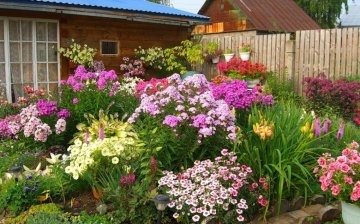
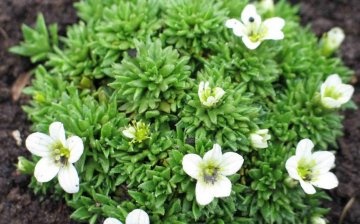
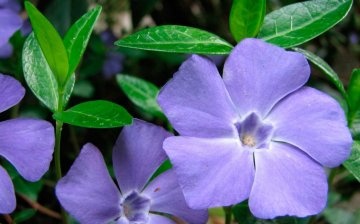
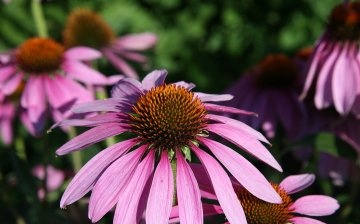
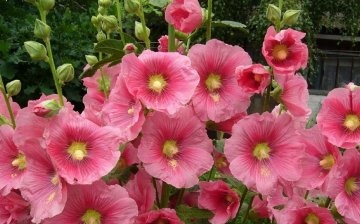
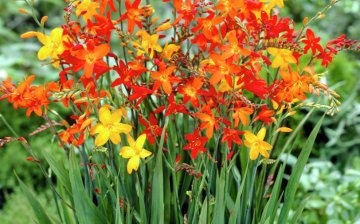
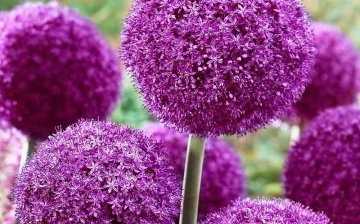
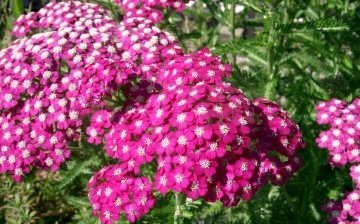

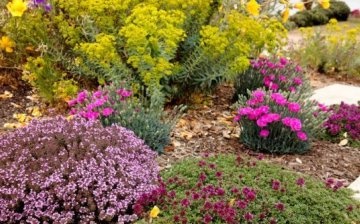










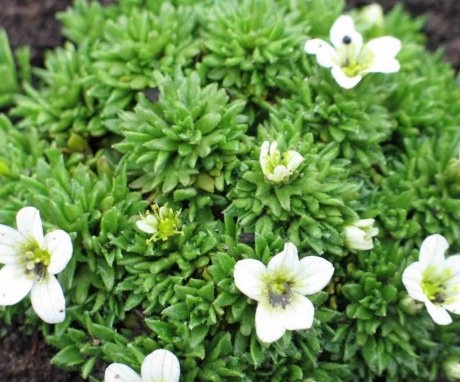
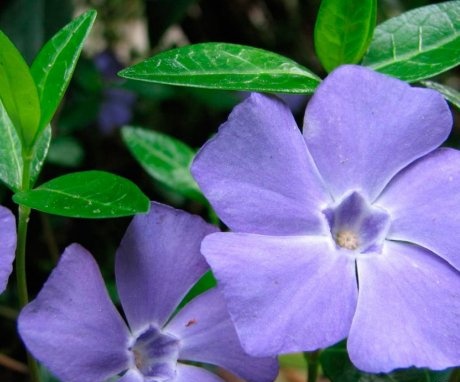
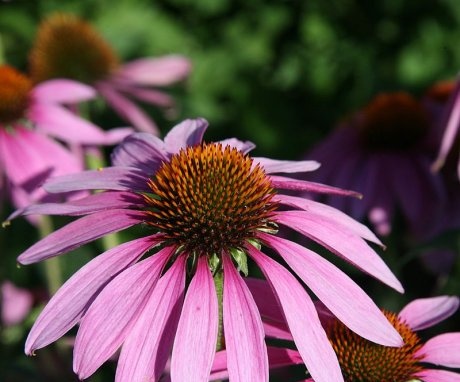
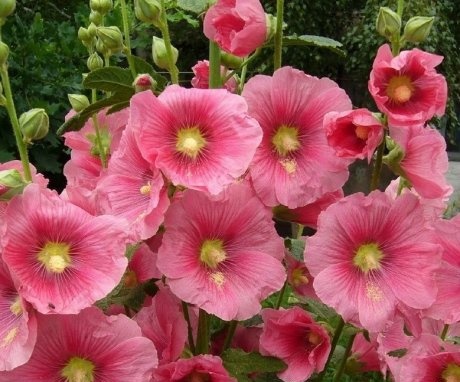
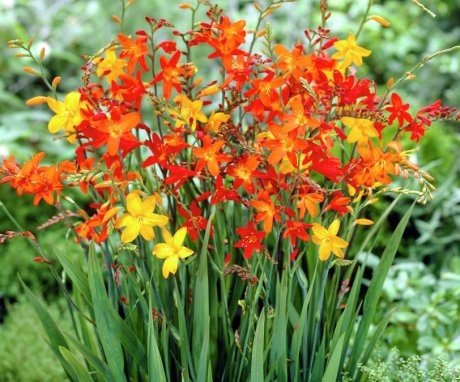
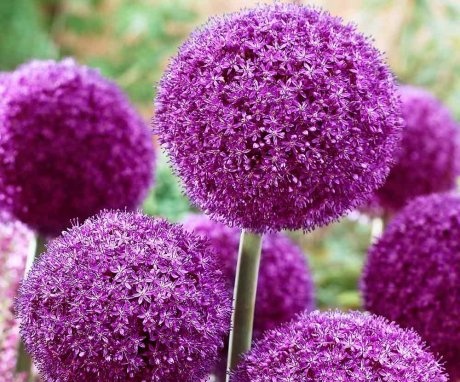
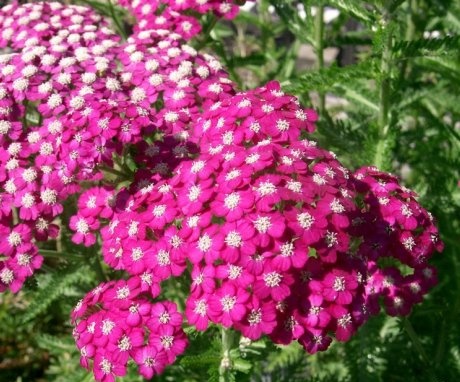
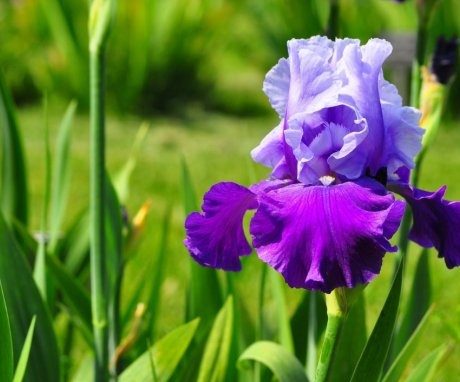
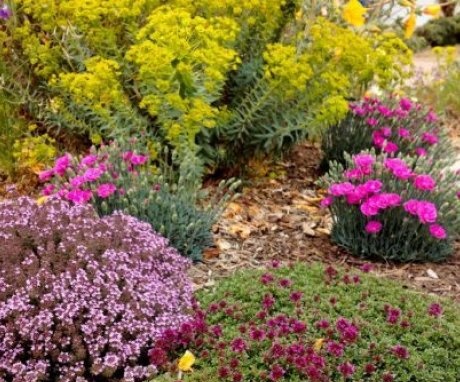
For a flower bed on the sunny side of the garden plot, I bought Gelikhrizum and a mixture of dried flowers, these are very unpretentious and drought-resistant plants that can be collected in autumn and made winter bouquets.